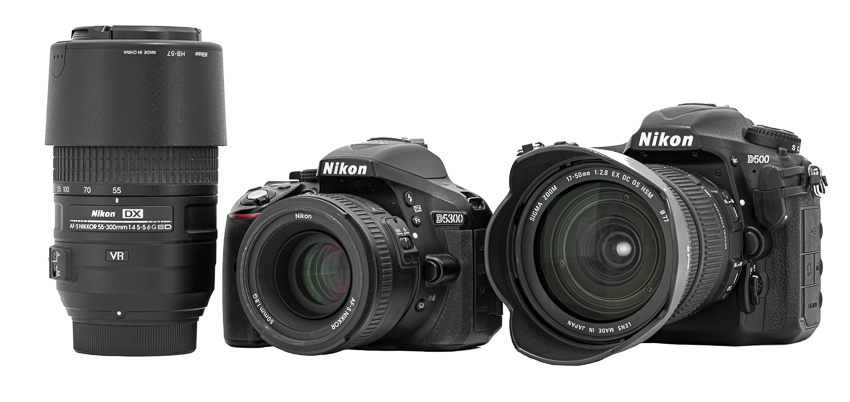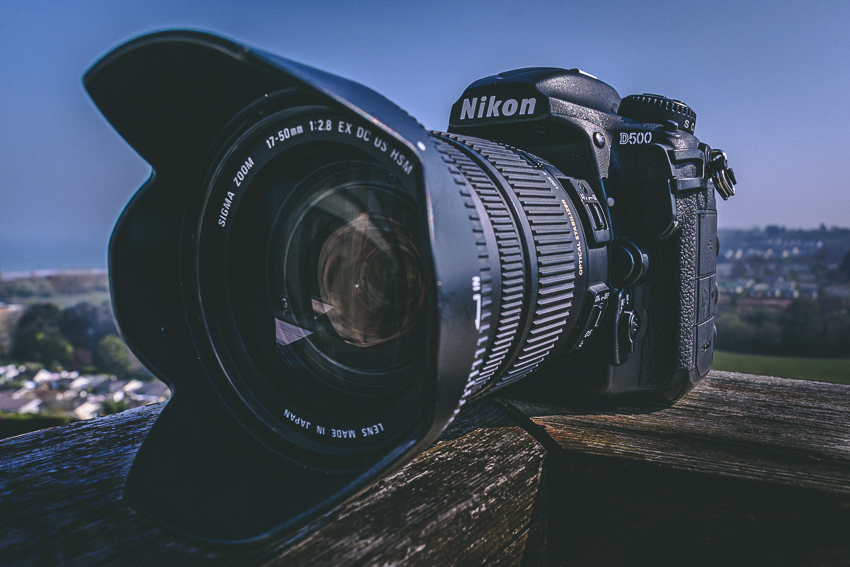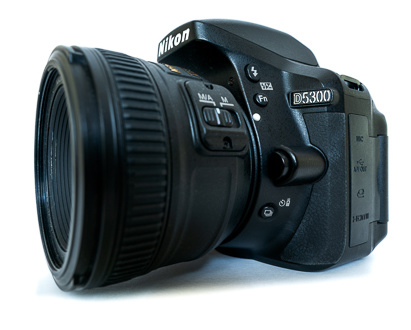A topic of much debate, often heated. What you need is very subjective. I feel it’s more about the limitations each set-up offers and then being able to make up your own mind. If you’re looking to start wedding photography these are some of my tips…

Photography and especially wedding photography is a real passion and I knew I wanted to be sure before I invested.
My first few weddings I was a second photographer. I was there to capture the candid shots, not the main shots. I was told anything I could get was a bonus. I wasn’t paid, no-one was expecting anything from me, it was a low-pressure job and a great learning experience!
Back then, I shot with the Nikon D500 and the Nikon D5300 as my main bodies. My lenses were:
– 35mm F1.8
– Sigma 17-50mm F2.8
– Nikkor 55-300mm F4.5 to F5.6
Focusing Issues
If you’ve not photographed people or anything like a wedding before, one thing to be wary of with cheaper cameras is focusing. Cheap cameras, in this case, are brand new cameras in the £200 to £800 range.
I had done mostly landscape, on a tripod. Focusing was simple, accurate and sharp 99% of the time. Life with cheap cameras was a lot easier for landscapes and my system loved low dynamic range scenes like blue hour and golden hour.
At a wedding though, I could go into burst mode, take 5 photos in a fraction of a second and only 2 or 3 will be where I focused, the rest would be focusing on something other than what I wanted. Although I hadn’t changed the focus on the eye, it would randomly start focusing on something else, like the nose, the shoulder, the wrist. This is a much bigger problem shooting wide open at say F1.8 but you need to be mindful of it.
The lenses were not top of the range and nor were my cameras so I had to take multiple shots for every major photograph to make sure I got at least one in the burst perfect.

You need to know the focusing system of your camera inside out and you need to know the limitations of the focusing system on your camera.
I would strongly suggest you go out and do some event photography. Shoot some outdoor events, indoor events, street photography in different types of light and so on. You need to be doing anything that can help you learn the limitations of your cameras and lenses.
Dark Venues are a problem
At first, during the build-up to the ceremony, everything was fine. I was photographing the guests outside and I was using mostly the D500 and the 55-300mm lens. The first problem was when we went inside for the ceremony.
This is the first part of the day where gear really matters. The ceremony was held in a typically dark room. With the zoom lens on I had to shoot with an ISO up to and even over 6400. The noise on lower-end cameras in that range is pretty bad.
I had to stop using the D5300 (level entry camera) because the ISO was so high, the photos looked awful. I was pretty much forced to use the D500, with its better handling of higher ISO, and switch between the 24-70mm and 35mm during the ceremony.
I had no choice but to switch to one camera and to shoot wide open the whole ceremony, trying to keep the ISO below 6400. Again, this is now where nailing focus becomes difficult. You’re shooting wide open so you’ll start to see more focus misses than at say F6.3.
Flash isn’t an option most of the time so it’s either high ISO with more in-focus shots or wide-open apertures and less focus-nailed shots.
The most important tip here: For the crucial shots (Rings, first kiss etc) you MUST take multiple photos to be sure the focus is nailed in at least one.
ISO Noise
It wasn’t until I obtained the professional gear that I realised just how huge the difference was with regards to the handling of ISO noise. On my basic cameras when the ISO went over 1,600 it started to look really, really grainy. I would do anything I could to not go over 3,200.
On my new cameras, I’ve happily shot ceremonies, receptions and events at 12,500 ISO and the results are amazing. New cameras, like the Sony A9 gives you much more flexibility in your decisions on camera settings when you enter dark venues.
Prime Lenses
This can start to be where things get high and mighty. Some will say they only shoot primes, others want the freedom of zooming with the lens, not their feet.
So what’s the pros and cons then?
With a zoom, it makes the day easier, especially for those candid moments. You can stand well back and the guests have no idea you’re even taking their picture. The con is they don’t stop down low enough for low-light situations like a dark ceremony room or reception.
A prime lens, on the other hand, can stop-down the furthest, meaning you can get the shot with the lowest ISO/noise possible. The cons are that you have to zoom with your feet and the focus won’t be as good when you’re shooting wide-open.
My cheaper lens choices would be…
I would have a zoom lens for sure. Something like a 70-200mm or 70-300 f/4.5-5.6G. For outdoors and being sneaky. This is a great focal range for capturing candid moments from afar!
I would have one prime lens. If I was mostly a second wedding photographer I’d go with the 50mm F1.8. This would allow me to capture the first kiss and ring shots at a further distance back. I’m wary I need to keep out of the main photographers frame so the 50mm keeps me that little bit further back.

I would also have one more lens. Something like the Sigma 17-50mm F2.8 for crop sensor cameras or the 24-70mm for full-frame cameras. This then allows me the option to shoot wider. If you can pick up a cheaper, second-hand F2.8, while not ideally lower, does at least allow you to get wider shots with less noise than say, a F5.6 lens.
A kit lens can do well and I’m not saying you can’t use it. The issues are mainly inside the venues and the receptions where you have to crank up the ISO much higher than is ideal.
My current lens set-up is
I have the 70-200mm F2.8 for all outdoor candids, I just love this lens for that part of the day.
For everything else, in dark, tight venues, I will have the 85mm F1.4 on one camera and the 20mm F1.8 on the other.
If the ceremony room is large, light and airy I’d switch the 20mm for my 24-70mm F2.8 just so I have more options.

What if I could only have one lens?
This is where knowing the venue and what light you’ll have is VITAL!
If I could only have one lens, on a full-frame camera, I would have the 24-70mm F2.8 (17-50mm F2.8 on crop cameras). It’s just too versatile and too useful at multiple focal lengths. I like telling a story and I don’t think you can tell a story of the day with just one focal length.
If however, I was smart, I’d have the 24-70mm F2.8 and I’d research the venue to see how dark it would be. If it would be a problem for my 24-70, I’d hire or borrow a prime lens (50mm F1.8 or 35mm F1.8) for the ceremony.
The 35mm and 50mm (often called nifty fifty) are incredibly cheap and incredibly sharp. This is one of those really rare times in photography where the low price you pay, for the sharpness you get, is incredible!
What camera body should I get?
Honestly, there has never been less difference between cameras, even DSLR compared to mirrorless. Now, it is much more about what the camera can do, rather than the quality.
I switched to mirrorless. I love eye-tracking and I love being able to see in the viewfinder exactly how the shot will look before I take it (no more chimping). I also love that the focusing system on my camera nails focus 99.9% of the time.
Sony’s mirrorless range of cameras currently has the lead on eye-tracking and focusing but I don’t think they will have this lead for much longer. Sony is also an expensive system to get into.
If you already have Canon or Nikon full-frame lenses, maybe hold off for the next iteration of mirrorless cameras from either of those brands. I can see some really big improvements coming quite soon.
The lenses that are coming out now are incredible, for bother mirrorless and DSLR. The sharpness is amazing. I feel that some of the new lenses coming out now have a character and look that I really enjoy.
I would rather have a professional lens on a cheap camera body, than a cheap lens on a professional camera body.
The most important thing…
You need to know your camera inside and out. You need to know when to shoot manual, when to shoot in one of the auto settings, and what likely problems you will face for each of those options.
As an example, shooting aperture priority with auto ISO in a dark venue, I’ve had settings like 1/25 and ISO 12,500 but it was 1/160 ISO 800 in manual. I had to manually expose for the subject in the middle of the frame while ignoring the darkness all around the venue.
I’m absolutely not one of those people who preach you must shoot in manual. I use aperture priority outside for all candids (especially useful when clouds keep passing in front of the sun). I tend to mostly use manual when I don’t trust what my camera will do in that situation.
I still say practise with events before you try a wedding. You really do not want to let the couple down! Check out my post ‘Event photography with a basic camera. Tips and tricks‘ if you’d like to learn more about this.
